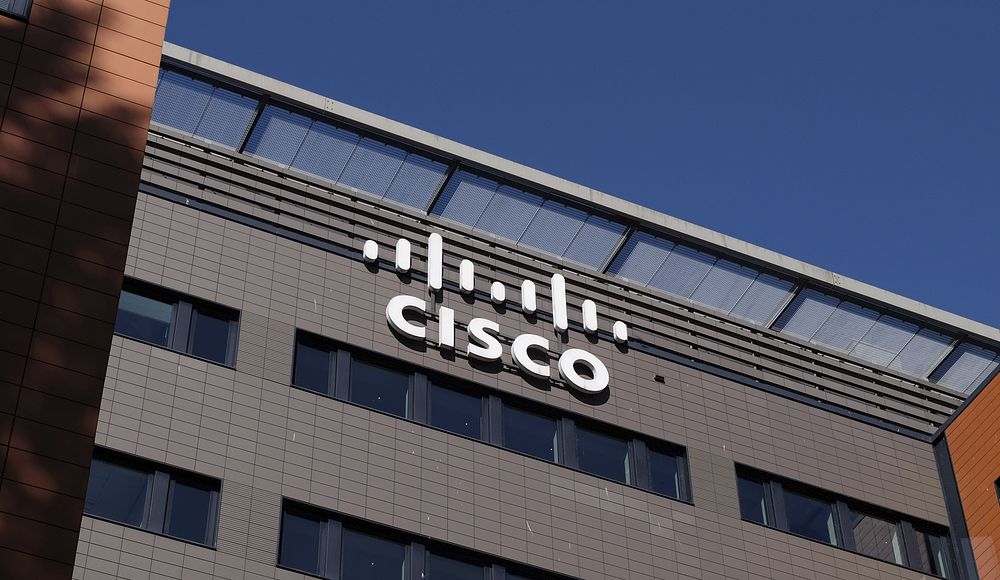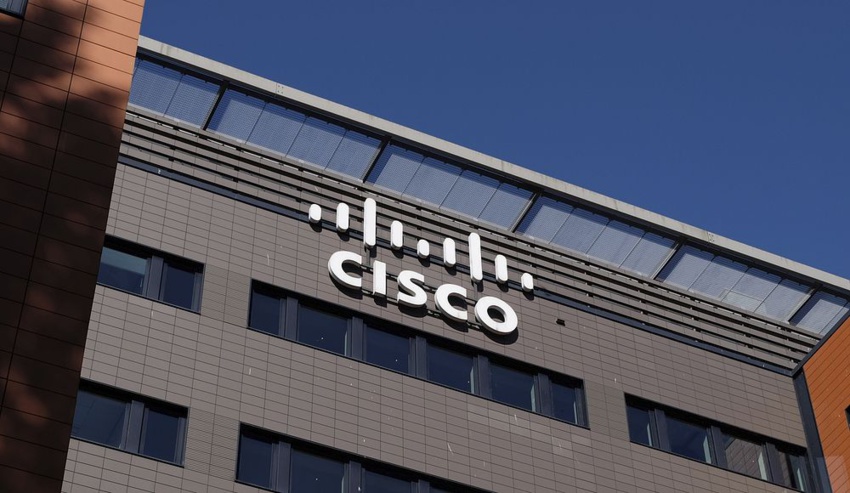If you find yourself feeling unsure about environmental sustainability topics and want to learn more, Sustainability 101 offers a blog series where you can gather information about different terms related to environmental sustainability. Whether you encounter these terms at work, in conversations with friends, or even during holiday gatherings, this series can be a helpful resource.
Have you come across the phrase "Smart Building" in recent meetings or in the news and wondered about its meaning? This blog aims to provide a comprehensive explanation of smart buildings and how Cisco technology aligns with them.
What exactly is a Smart Building?
According to an article by CommScope, hosted by the US Green Business Council (USGBC), a smart building is defined as a structure that gathers data from multiple systems and devices. It then shares this information to enable actions that enhance business processes, operational efficiency, sustainability, health and safety of occupants, and overall user experience. Essentially, a smart building utilizes the data from its various systems to implement real-time changes.
The term "intelligent building" has been in existence since the 1980s when rising energy prices highlighted the necessity for and development of automated building systems. With the advent of the internet boom in the 1990s and early 2000s, intelligent buildings evolved into smart buildings, largely due to the connectivity made possible by the internet.
As per the International Energy Agency (IEA), buildings were responsible for 30% of global final energy consumption in 2021, and this figure is expected to continue rising as buildings' energy demands increase. Smart buildings offer a systematic approach for building owners and operators to reduce energy consumption and emissions in their portfolios while simultaneously improving occupant health and satisfaction.
What are the advantages of a Smart Building?
The true benefit of a smart building lies in how the collected data is utilized. Smart
buildings can bring about the following advantages:
Lower energy costs: Smart building designs can save money and reduce emissions from energy-intensive systems such as Heating, Ventilation, and Air Conditioning (HVAC) and lighting. For instance, buildings equipped with interconnected HVAC, security, and occupancy systems can adjust temperature based on employees' presence in the office. This ensures that heating and air conditioning are only active when necessary.
Lower operational costs: Smart building data can greatly assist facility management teams. For example, sensors monitoring door usage can provide valuable insights to janitorial teams, allowing them to optimize their operations. Instead of cleaning every conference room and restroom on a floor, teams can focus on areas that actually require cleaning, thus saving time, money, and resources.
Greater flexibility: A well-designed smart building can be future-proof. By considering interoperability during the design phase, building systems can adapt to future technological advancements and changes in the industry. This flexibility ensures that the building remains adaptable and up-to-date as technology evolves.
What is Cisco's impact on Smart Buildings?
Cisco plays a significant role in the advancement of smart buildings by offering technology solutions such as Catalyst 9000, Power over Ethernet (PoE), and various Cisco devices and spaces.
The Catalyst 9000 provides the network infrastructure that allows building systems and IT services to converge seamlessly.
Power over Ethernet (PoE) enables devices to share data and power connectivity through a single Ethernet cable, simplifying infrastructure and operations.
Cisco devices like the Room Navigator provide valuable data points that enable HVAC and lighting systems to be adjusted based on occupancy. When connected with sensors and Cisco Spaces, these devices allow users to customize their room experience.
Cisco Spaces offers visualizations of building system data, empowering users to make informed decisions. Employees and visitors can choose where to work based on room occupancy and temperature.
Smart buildings play a vital role in helping owners and operators understand and reduce energy consumption while enhancing occupant comfort. Cisco's Collaboration Centers exemplify digitally enabled, efficient workspaces that utilize Cisco devices and networks to create safe, comfortable, and inspiring environments for meetings. For example, the redesign of Cisco's Penn 1 building in New York City incorporates PoE capabilities and Cisco video endpoints to monitor occupancy, space utilization, air quality, energy usage, and security. This implementation reduces expenses and energy consumption, serving as a successful integration of smart building technology.
To explore Cisco's comprehensive range of smart building solutions and their associated use cases, you can visit Cisco Smart Building Solutions and Cisco's portfolio for smart buildings.
If you're eager to learn more and engage with environmental sustainability topics, stay tuned for the next blog in our series, where we will delve into the intersection of IT and climate change.
To know more about Cisco’s environmental, social, and governance (ESG) initiatives, including its goals and commitments, click here.
Have you come across the phrase "Smart Building" in recent meetings or in the news and wondered about its meaning? This blog aims to provide a comprehensive explanation of smart buildings and how Cisco technology aligns with them.
What exactly is a Smart Building?
According to an article by CommScope, hosted by the US Green Business Council (USGBC), a smart building is defined as a structure that gathers data from multiple systems and devices. It then shares this information to enable actions that enhance business processes, operational efficiency, sustainability, health and safety of occupants, and overall user experience. Essentially, a smart building utilizes the data from its various systems to implement real-time changes.
The term "intelligent building" has been in existence since the 1980s when rising energy prices highlighted the necessity for and development of automated building systems. With the advent of the internet boom in the 1990s and early 2000s, intelligent buildings evolved into smart buildings, largely due to the connectivity made possible by the internet.
As per the International Energy Agency (IEA), buildings were responsible for 30% of global final energy consumption in 2021, and this figure is expected to continue rising as buildings' energy demands increase. Smart buildings offer a systematic approach for building owners and operators to reduce energy consumption and emissions in their portfolios while simultaneously improving occupant health and satisfaction.
What are the advantages of a Smart Building?
The true benefit of a smart building lies in how the collected data is utilized. Smart
buildings can bring about the following advantages:
Lower energy costs: Smart building designs can save money and reduce emissions from energy-intensive systems such as Heating, Ventilation, and Air Conditioning (HVAC) and lighting. For instance, buildings equipped with interconnected HVAC, security, and occupancy systems can adjust temperature based on employees' presence in the office. This ensures that heating and air conditioning are only active when necessary.
Lower operational costs: Smart building data can greatly assist facility management teams. For example, sensors monitoring door usage can provide valuable insights to janitorial teams, allowing them to optimize their operations. Instead of cleaning every conference room and restroom on a floor, teams can focus on areas that actually require cleaning, thus saving time, money, and resources.
Greater flexibility: A well-designed smart building can be future-proof. By considering interoperability during the design phase, building systems can adapt to future technological advancements and changes in the industry. This flexibility ensures that the building remains adaptable and up-to-date as technology evolves.
What is Cisco's impact on Smart Buildings?
Cisco plays a significant role in the advancement of smart buildings by offering technology solutions such as Catalyst 9000, Power over Ethernet (PoE), and various Cisco devices and spaces.
The Catalyst 9000 provides the network infrastructure that allows building systems and IT services to converge seamlessly.
Power over Ethernet (PoE) enables devices to share data and power connectivity through a single Ethernet cable, simplifying infrastructure and operations.
Cisco devices like the Room Navigator provide valuable data points that enable HVAC and lighting systems to be adjusted based on occupancy. When connected with sensors and Cisco Spaces, these devices allow users to customize their room experience.
Cisco Spaces offers visualizations of building system data, empowering users to make informed decisions. Employees and visitors can choose where to work based on room occupancy and temperature.
Smart buildings play a vital role in helping owners and operators understand and reduce energy consumption while enhancing occupant comfort. Cisco's Collaboration Centers exemplify digitally enabled, efficient workspaces that utilize Cisco devices and networks to create safe, comfortable, and inspiring environments for meetings. For example, the redesign of Cisco's Penn 1 building in New York City incorporates PoE capabilities and Cisco video endpoints to monitor occupancy, space utilization, air quality, energy usage, and security. This implementation reduces expenses and energy consumption, serving as a successful integration of smart building technology.
To explore Cisco's comprehensive range of smart building solutions and their associated use cases, you can visit Cisco Smart Building Solutions and Cisco's portfolio for smart buildings.
If you're eager to learn more and engage with environmental sustainability topics, stay tuned for the next blog in our series, where we will delve into the intersection of IT and climate change.
To know more about Cisco’s environmental, social, and governance (ESG) initiatives, including its goals and commitments, click here.


 Cisco's Impact on Smart Buildings
Cisco's Impact on Smart Buildings





 Companies
Companies